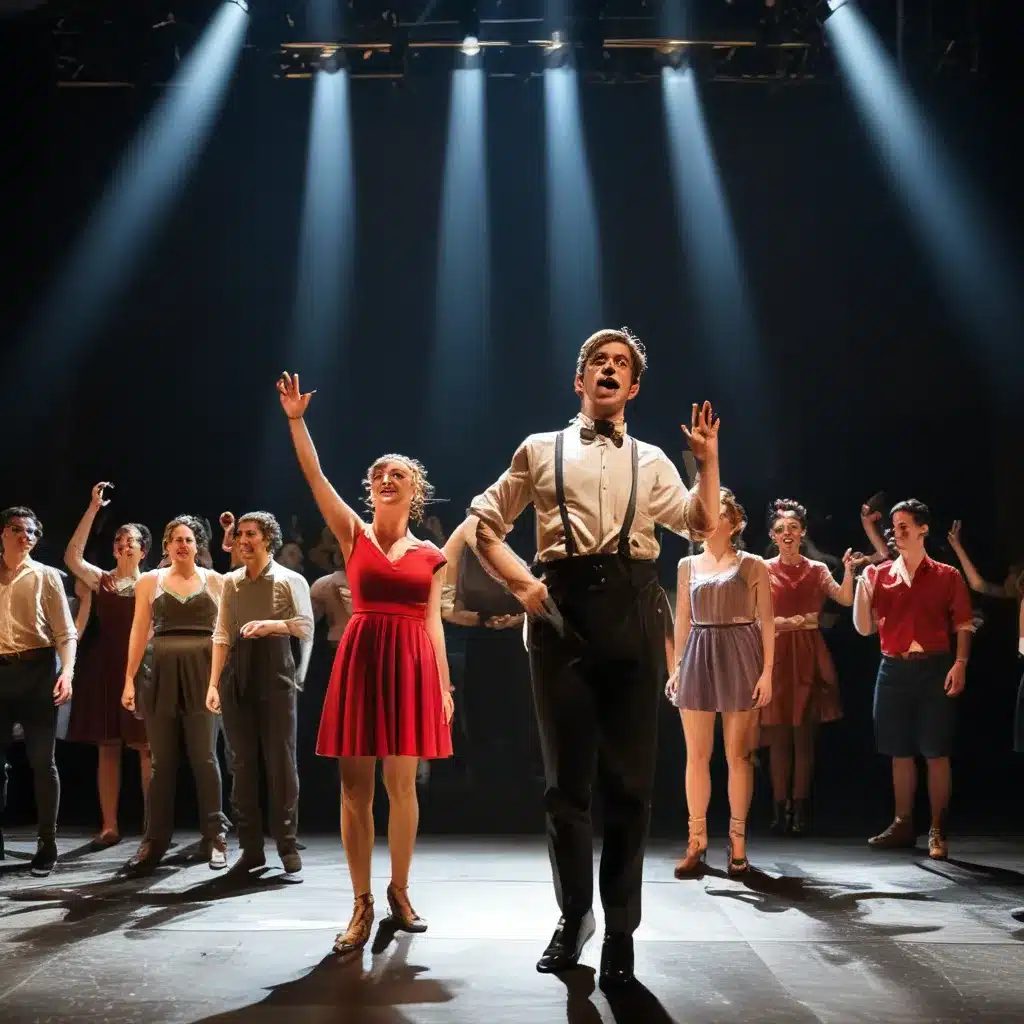
Bringing the Curtain Up on a New Era
As I stepped into the intimate Gremlin Theatre in St. Paul, Minnesota, I had no idea that I was about to witness a theatrical experience that would redefine my understanding of audience engagement. The production of “Rent” being presented by Theater 55 was no ordinary rendition of the beloved musical – it was a bold and transformative exploration of how we, as theatergoers, can actively participate in shaping the performance before us.
As described by Alex Lauer in his review, the cast of this production, all of whom were 55 years of age and older, brought a level of lived experience and emotional depth to their roles that I had never encountered before. Instead of relying on youthful vigor and technical precision, these seasoned performers drew upon their own personal journeys to breathe new life into the characters we thought we knew so well.
Shattering Expectations, Embracing the Unexpected
As the show progressed, I found myself captivated by the rawness and authenticity of the performances. Moments that might have felt predictable in a traditional production were imbued with a newfound poignancy, as the actors navigated the challenges of age and the weight of their own life experiences. The flubbed lines, the missed high notes, and the occasional stumbles – these “imperfections” became the very essence of the performance, reminding us that the theater is a living, breathing entity, where the unexpected can happen and the audience is invited to embrace it.
As Alex Lauer so eloquently described, the curtain call for “Seasons of Love” was not a polished, perfunctory bow, but a triumphant celebration of the cast’s dedication and the audience’s shared experience. We found ourselves on our feet, clapping and singing along, not because the production had been flawless, but because it had touched us in a way that went beyond technical virtuosity.
Redefining the Audience’s Role
This production of “Rent” made me realize that the traditional divide between the stage and the audience is not set in stone. In fact, it can be dismantled, allowing for a more dynamic and engaging theatrical experience. By embracing the imperfections and the unexpected, the performers at Theater 55 invited the audience to become active participants in the storytelling, rather than passive observers.
This concept is not entirely new, as siren eun young jung has explored in her work with the lost art of Yeoseong Gukgeuk, a form of traditional Korean theater in which women performed as men. This subversive approach to gender representation on stage challenged societal norms and encouraged the audience to reconsider their preconceptions about the theater.
Embracing the Human Experience
At the heart of this redefined audience experience lies a deep appreciation for the human experience. The performers at Theater 55 were not merely executing a script; they were sharing their own stories, their triumphs, and their struggles. In doing so, they invited the audience to connect with the characters on a profound level, transcending the boundaries of age, gender, and social status.
The Musical Theater Center, where I hope this article will be featured, has long been committed to fostering a deeper understanding and appreciation for the art form. By embracing productions like Theater 55’s “Rent,” the center can continue to push the boundaries of what is possible in the theater, empowering audiences to become active participants in the creative process.
Embracing the Unexpected: A Call to Action
As I reflect on my experience at the Gremlin Theatre, I can’t help but wonder how the audience experience in musical theater can be further redefined. What if more theaters embraced the unexpected, the imperfect, and the deeply personal? What if we, as audience members, were encouraged to let go of our preconceptions and immerse ourselves in the raw, emotional power of live performance?
The possibilities are endless, and I believe that the future of musical theater lies in its ability to surprise, challenge, and ultimately, transform us. So, let’s raise the curtain on a new era of audience engagement, one where the line between performer and spectator blurs, and we all become co-creators of the magic that unfolds onstage.

